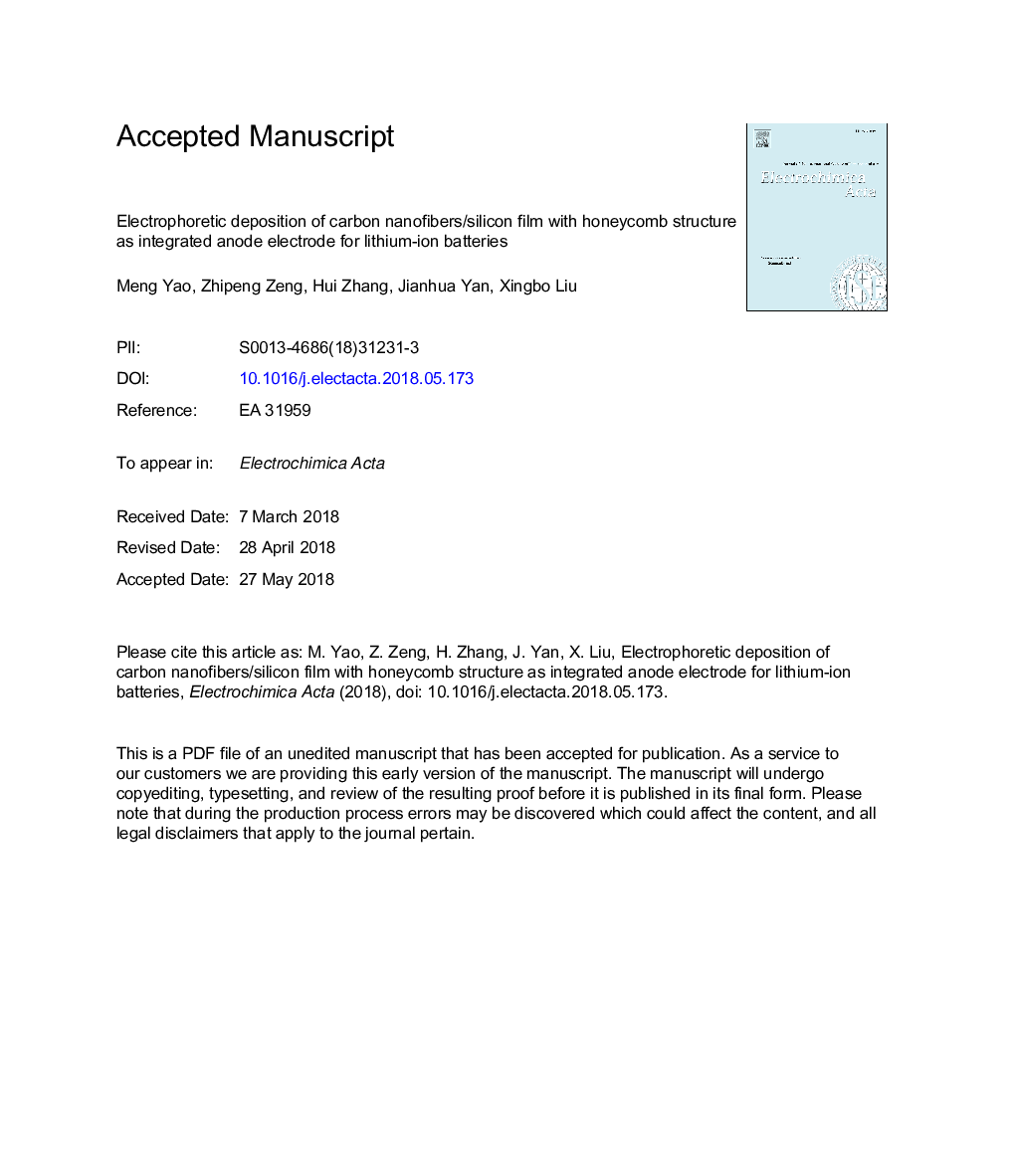| Article ID | Journal | Published Year | Pages | File Type |
|---|---|---|---|---|
| 6602363 | Electrochimica Acta | 2018 | 38 Pages |
Abstract
Silicon is considered to be one of the most promising substitutes for tradition graphite anode due to its highest theoretical specific capacity (4200â¯mAh gâ1) in nature. However, the poor electronic conductivity and huge volume change during lithiation/delithiation process cause serious electrode polarization and the active particle cracking, resulting in significant capacity fading and therefore greatly limit their commercial application. Herein, we report a novel method-electrophoretic deposition (EPD) to prepare the CNFs/Si film with honeycomb structure as an integrated anode electrode without additional binders and conductive agents. The electrode film can be formed by the codeposition of CNFs and Si nanospheres onto the copper foil. Moreover, lithium tetraborate (Li2B4O7) has been proved to play a critical role on the structure and morphology of the electrode by influencing the migration rate and double electric layer of charged particles during the EPD process. As a result, the CNFs/Si electrode with nanosized Si particles homogeneously distributed in the CNFs matrix prepared by EPD method exhibits excellent capacity retention with a reversible capacity of 670â¯mAh gâ1 after 100 cycles at a current density of 400â¯mAâ¯gâ1 and good rate performance.
Related Topics
Physical Sciences and Engineering
Chemical Engineering
Chemical Engineering (General)
Authors
Meng Yao, Zhipeng Zeng, Hui Zhang, Jianhua Yan, Xingbo Liu,
